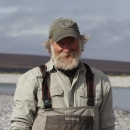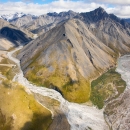Humpback Whitefish Coregonus pidschian is an important subsistence fishery resource for local communities within the upper Tanana River drainage. Community members have expressed concerns to Tetlin National Wildlife Refuge (NWR) staff on perceived declines in size and abundance of Humpback Whitefish in the area. To address these concerns, a study was conducted to evaluate demographic changes in local spawning populations of Humpback Whitefish over a 20-year time period. We compared length distributions, weight at length statistics, survival, and growth of Humpback Whitefish using data collected during two time periods separated by about two decades. The results of this study indicate that present-day Humpback Whitefish are, on average, 16 mm (approximately 4%) smaller, slightly heavier at length, exhibit slower growth, and attain smaller maximum sizes than fish sampled 20 years ago. Despite declining in size in recent years, Humpback Whitefish are currently experiencing greater survival than those 20 years ago. These results support local concerns that Humpback Whitefish appear to be getting smaller, but greater survival indicates that abundance is relatively stable or increasing over time. We hypothesize that late in life density-dependent effects and (or) changing environmental conditions may be influencing size and growth dynamics of these populations. To further evaluate the relationships between high survival, environmental conditions, and growth, it is recommended that otolith growth chronologies be developed and analyzed to determine if regional environmental changes may be influencing the different growth patterns we observed here. In addition, these types of sampling events and analyses are recommended every 10–15 years to develop a longer record of population variation for this important subsistence resource.
Publication date
Type of document
Report
Facility
Program
Species
FWS and DOI Region(s)



